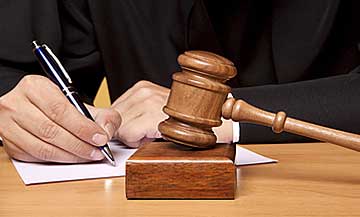 According to the credit rating agency Serasa Experian, the number of applications for judicial recovery (“JR”) in 2015 was the most significant since the Brazilian Bankruptcy Law entered into force 10 years ago. This record is expected to be overrun again in 2016.
According to the credit rating agency Serasa Experian, the number of applications for judicial recovery (“JR”) in 2015 was the most significant since the Brazilian Bankruptcy Law entered into force 10 years ago. This record is expected to be overrun again in 2016.
The services sector was the one that mostly resorted to JRs, followed by trade and industry. The branches of activities most affected were the automotive industry, civil construction, transportation and logistics, automotive dealerships and the ethanol industry.
The reasons are known to all: the deepening of the economic recession, the credit crunch, the monetary devaluation and the rising inflation. Additionally, lawyers, courts and businessmen are becoming increasingly familiar with JR mechanisms and equally at ease to use them.
The purpose of a JR is remarkable. It aims to enable a company that has lost the ability of honoring its debts to overcome its difficulties, in order to preserve the business continuity, the job positions and the creditors’ interests. In other words, it gives a fresh impetus to the company for a period of 180 days, period in which credits are prevented from being collected and the company may reorganize. It is relevant to point out that tax related debts, real estate conditional sales (alienação fiduciária) and assets covered by a retention of title clause are not concerned by a JR.
A company intending to apply for a JR may not be bankrupt or having been subject to a JR in the last five years. Furthermore, it may not have been convicted of a bankruptcy offense. It shall be required to substantiate both its economic hardship and its business feasibility.
If the JR is granted by the Court, the applicant shall dispose of 60 days to submit the recovery plan scheduling how and when the creditors are to be paid. Any creditor may offer objections to the proposed plan, in which case a Creditors’ Meeting is called for voting. Exception made to specific quorum criteria, decisions are in general made per class of credit by the simple majority of the creditors attending the meeting. If the plan is approved, the reorganization may continue up to its completion. If the plan is rejected, the Court may declare the company bankrupt.
In practice, however, the use of the JR mechanisms is not clear cut. While many debtors only apply for JR in serious circumstances, others take advantage of it as a gimmick to postpone, to negotiate or to avoid paying creditors.
The most common misuses are: the submission of the application unaccompanied by the required documents with the sole purpose of making pressure against creditors; concealment of assets; payment of certain creditors in detriment of others; simulated transactions (assignment of receivables to third parties or indirectly to the debtor himself); collusion of creditors (sometimes organized in WhatsApp, groups) to approve unfeasible plans; maneuvers to delay the proceeding such as offering fake guarantees or submission of pointless petitions.
Courts also frequently issue controversial decisions such as the suspension of tax debts on the grounds that any payments would impair the recovery of the company. Courts may even prevent the owner of an asset from retaking its possession on the grounds that the asset would be allegedly “crucial” to the continuity of the business of the company. Finally, Courts often extend the non-extendable terms set forth by the Bankruptcy Law based on the “complexity of the subject matter” or when the delay is “caused entirely by others”.
With regard to recovery plans in Brazil, an average haircut of 30% to 40% and a grace period of 1 to 3 years are trends. Payments are often scheduled to occur in installments scattered over several years and conditioned to the debtor’s net revenues. At the end of the grace period, the debtor still may request the recovery plan to be reviewed. Alternatively, the debtor may simply declare that the plan is not feasible and apply for bankruptcy.
Therefore, creditors in general and unsecured creditors in particular should not expect much from JRs. It is always recommended to negotiate as much as possible and to ask for guarantees, preferably those in rem. It is also useful to involve other entities of the same economic group and to seek satisfactions against personal guarantors. The JR proceeding should be closely followed up and any suspicious or unusual transaction should be challenged and clarified.
From a debtor’s perspective, it is perfectly legitimate to rely on the JR mechanism to preserve a business activity. Objections may however arise when the use of the JR mechanisms exceeds the subtle threshold between the legitimate exercise of rights and the practice of unethical behavior or even bankruptcy offenses.
Juliana G. Meyer Gottardi is partner at Pacheco Neto Sanden Teisseire Law Firm.



